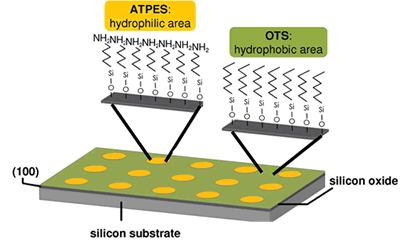Areas of focus:
- Ionic liquids
- Co-crystals: co-crystals are multiple-component crystal systems that coexist through hydrogen bonds or non-covalent interactions. The reactants are solids at ambient conditions. The development of co-crystals of active pharmaceutical ingredients is of great current interest as a means of increasing the solubility of poorly soluble drugs. However, co-crystals can also be used as a means of separation. For example, a co-crystal could be formed with an impurity but not with the desired component. If the solubility of the co-crystal is very low, it could be possible to crystallize out the impurity (as the co-crystal) while leaving the desired component in solution. This can be advantageous for pharmaceutical intermediates by eliminating their crystallization. Our group is currently evaluating various strategies for employing co-crystals for separations.
- Self-assembled monolayers (SAMs) and chiral separation: SAMs are ordered molecular assemblies that are formed spontaneously by the adsorption of a surfactant with a specific affinity of its headgroup to a substrate. A SAM molecule consists of a headgroup, chain or backbone, and endgroup. A SAM system is typically defined by the headgroup-substrate pair such as thiol SAMs on gold substrates and silane-based SAMs on SiO2. One application of SAM is chiral separation. Chiral drugs are a subgroup of drug substances that contain one or more chiral centers. The pure enantiomer is preferred over the racemate in mnay marketed dosage forms because of safety and efficacy. In our research, we used chiral self-assembled monolayers on gold as resolving auxiliaries in the crystallization of chirality-specific drugs.

